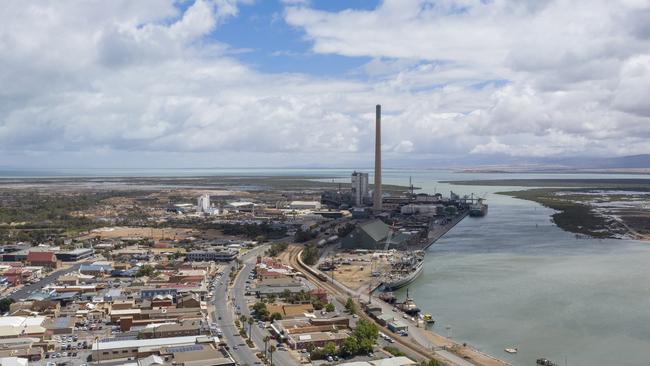Port Pirie: Average amount of lead in children rises to near 10-year high
The average amount of lead recorded in the blood of Port Pirie’s young children has risen to its highest point in nearly ten years, as health experts explain what caused the high readings.
SA News
Don't miss out on the headlines from SA News. Followed categories will be added to My News.
- Port Pirie’s high-polluting plant restarted by Nyrstar
- How to make the most of your Advertiser digital subscription
The average amount of lead in children living in Port Pirie has risen to its highest level in nearly a decade.
New figures released by SA Health today show the average level of lead in the blood of children aged under five was 5.4 micrograms per decalitre last year, compared with 4.5 in 2018.
Meanwhile, testing in two-year-old children showed an average level of 7.2 m/gl, which is up from 5.8 the previous year.
Levels this high have not been seen since 2010.
SA Health attributed the higher-than-average results to an “extended period of high lead emissions between 2016 and 2018” and dusty weather.
The new data comes after Port Pirie smelter operator Nyrstar restarted its mothballed high-polluting lead plant in September.

However, director of Scientific Services at SA Health Dr David Simon said the airborne lead emissions were actually lower than average in 2019.
Despite this, the blood results are exactly what health experts predicted.
“Although children absorb lead very rapidly, the process of lead excretion from the body is slow, so the fall in average lead-in-air levels does not immediately improve the population’s blood lead levels,” Dr Simon said.
A Nyrstar spokeswoman said “significantly more work needs to be done to deliver a step change reduction in children’s blood lead levels”.
Nyrstar contributes $3 million per year to the Targeted Lead Abatement Program, which develops lead exposure reduction strategies.
“Nyrstar is fully supportive of an independent review which will be undertaken in coming months to assess what needs to be done to ensure TLAP is given the greatest opportunity to meet its objectives,” the spokeswoman said.

Premier Stephen Marshall, meanwhile, said the government is “very concerned” about the latest results.
“We will be sitting down with Nyrstar and we will be working through those issues,” he said
Health Minister Stephen Wade said: “The long term project to deal with lead abatement in Port Pirie will take years to work through, the government is committed to that program”.
Blood levels above 10 m/gl can affect body functions and organs in both adults and children.
According to the National Health and Medical Research Council, lead sources should be actively reduced when blood levels reach five m/gl.
University of Adelaide toxicologist Dr Ian Musgrave agreed the 2019 figures are concerning.
“I’m puzzled and disturbed – presumably everyone else involved is too,” he said.
“The major issue with these sorts of lead levels are associated with poor brain development, which can lead to behavioural issues and reduction in intelligence.”
He said a variety of factors could cause high levels of lead, including extended drought conditions, which leads to raised dust.
“Regardless of the actual (cause), the fact that they’re rising again is worrying,” he said.
Originally published as Port Pirie: Average amount of lead in children rises to near 10-year high
